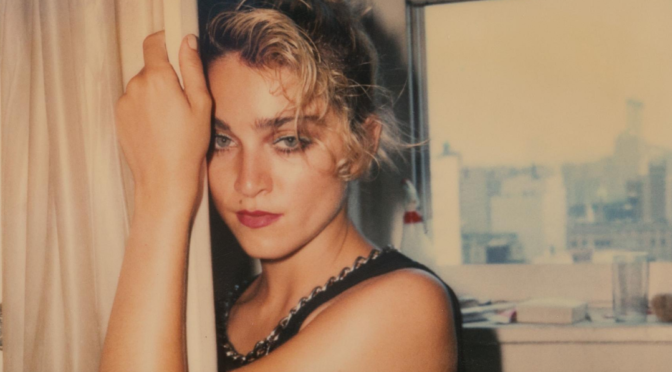August 16th. Some know it as Elvis’ death day. Most, Madonna’s birthday. There is, however, something to be said for the fact that The King croaked on the same day Madonna celebrated her nineteenth birthday in 1977. It was the year she attempted to try playing it straight by going to college at the University of Michigan, on a dance scholarship for ballet that she ultimately ended up abandoning in favor of New York City in 1978. Her decision to risk everything–forsake a predictable path of conventionality–occurred fortuitously just as rock ‘n’ roll’s–pop culture’s–only salvation, Presley, entered the next realm.
With Madonna working her big fish in a little pond antics in New York, she suddenly came to fear, in the back of her mind, that perhaps she wouldn’t make it quite as effortlessly as she thought she would based on sheer chutzpah alone. It is around this time that she wielded her feminine wiles for the purpose of acquiring knowledge about the music industry. Back in Detroit, her connection to music was drummer Stephen Bray (who she would later summon to New York, promising to let him produce her first single, “Holiday,” and then ultimately selling him down the river in favor of Mark Kamins, who had the personal relationship she needed with Sire Records honcho Seymour Stein to make the record happen). But for her early NYC ragamuffin incarnation, it was a musician named Dan Gilroy–now best known for writing the script to Nightcrawler–in a band called The Breakfast Club that Madonna would turn to for tutelage.
Though Gilroy was in love with her–enough to ignore his brother Tony’s protests when he let her move in with them in the abandoned synagogue they inhabited in Corona, Queens–Madonna opted to go to Paris with one-hit wonder and then disco sensation Patrick Hernandez to attempt being groomed as a disco diva herself. When the producers trying to “mold” her finally pushed her to her brink, Madonna fled back to New York, relying once again on the Gilroy brothers for shelter and then forming Emmy, her own band with Bray on drums.
Eventually, Madonna would be led to Camille Barbone of Gotham Management, where her access to professional music equipment would help her craft the demo tape for “Everybody,” a dance/electronic-y track that was in contrast to the sonic direction Barbone had been grooming her for–a more Pat Benatar-esque presence and sound. But Madonna’s thirst to explore her own musical ambitions–to learn every aspect of the business on her own terms–was unquenchable. And what she learned, clearly, was that being a pop star (though this term still had yet to fully realize itself at that time) was more bankable than a rocker chick in the vein of Joan Jett.
As Madonna’s “Everybody” single began to gain NYC-based fame–especially at Danceteria–it paved the way for “Holiday,” the launching pad for her self-titled album and the accompanying videos for “Lucky Star” and “Borderline” that would solidify the sexual, yet playful iconography of her image.
Even after her stardom was firmly secured by the 1984 performance of “Like A Virgin” at the first MTV Video Music Awards, Madonna’s hunger never ceased, a fact apparent with each new album and reinvented image she would release over the years. Every era has been an example of Madonna’s endless reflection and exploration of different themes, cultures and visual motifs. She is, after all, a staunch believer in the Socrates aphorism, “The unexamined life is not worth living,” a quote she even wields with a wink on “Back in Business,” a track from the Dick Tracy-inspired album, I’m Breathless.
And so, at fifty-eight years old, Madonna continues to show us her insatiable desire to know more, to always strive for a better version of herself; it’s an example we can all learn from.




















